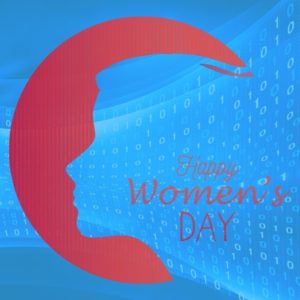
This month, we celebrate Women’s History Month, which honors the important contributions of women throughout the ages, and International Women’s Day, which recognizes the rich social, economical, political, and cultural influences of women.
Our business and our world wouldn’t be where they are today without the incredible advances women have made in the technology sphere. There have been many women who have made immensely important contributions to technology. Here are five you should know.
Ada Lovelace
Often referred to as “the world’s first computer programmer,” it was Ada Lovelace’s notes on the Analytical Engine that Alan Turing used for inspiration to work on the first modern computer in the 1940’s.
With skills and keen interest in machines her whole life, Lovelace formed a working relationship with Charles Babbage, the inventor of the “Analytical Engine”. The Analytical Engine was a theoretical device that resembled a modern computer.
When Lovelace was asked to translate an article on this device, she did so and added notes that were three times longer than the original. In her notes, she explained how codes could be created for a device to handle letters and symbols along with numbers and theorized the method now known as looping. In 1843, it was published in an English science journal and has been referred to ever since.
Hedy Lamar
Although she is best known for her film career, Hedy Lamar was a self-taught inventor. Lamar invented an updated stoplight and a tablet that dissolves in water to create a soda-like drink.
Most notably, she was awarded a patent in 1942 for her “secret communication system.” She designed it with the help of composer George Antheil and it was developed as a frequency-hopping system intended to set radio-guided torpedoes off course. It turned into the basis for Wi-Fi, GPS, and Bluetooth technologies.
Because of this work, she is the first woman to receive the Invention Convention’s Bulbie Gnass Spirit of Achievement Award and was inducted into the National Inventors Hall of Fame in 2014.
Katherine Johnson
Katherine Johnson’s trajectory analysis as a mathematician for NASA was crucial to the success of the U.S.’s first flight to the moon. All of her calculations were critical in future space missions. John Glenn, the first American in orbit, requested that Johnson run the numbers programmed into the computer at NASA by hand, saying, “If she says they’re good…then I’m ready to go.”
In 1960, she co-authored a paper with a NASA engineer about calculations for placing spacecraft in orbit. It was the first time a woman in her division received credit as an author. She went on to author or co-author 26 research reports in her career.
Mary Allen Wilkes
When the prospect of personal computers was being developed, Mary Allen Wilkes, a computer programmer and logic designer, was tapped to write the software that would control the computer in real time. She developed her software, LINC, and made updates to the machine at home in 1965, making her the first ever home computer user.
The updates she made from her home were a breakthrough in usability for the smaller machines. Her work has been recognized at the National Museum of Computing.
Radia Perlman
Radia Perlman’s invention of the algorithm behind the Spanning Tree Protocol (STP) was instrumental in creating today’s internet and earned her the nickname “Mother of the Internet.” Her work has been described as putting “basic traffic rules in place” for internet usage by telling networks how to self-organize and move data.
She is still a computer programmer and engineer at Dell EMC. In addition to teaching at highly-respected universities across the nation, she has been issued over 100 patents. She has been the recipient of the Lifetime Achievement Awards from Usenix and the Association for Computing Machinery’s Special Interest Group on Data Communication (SIGCOMM).
Happy International Women’s Day!
